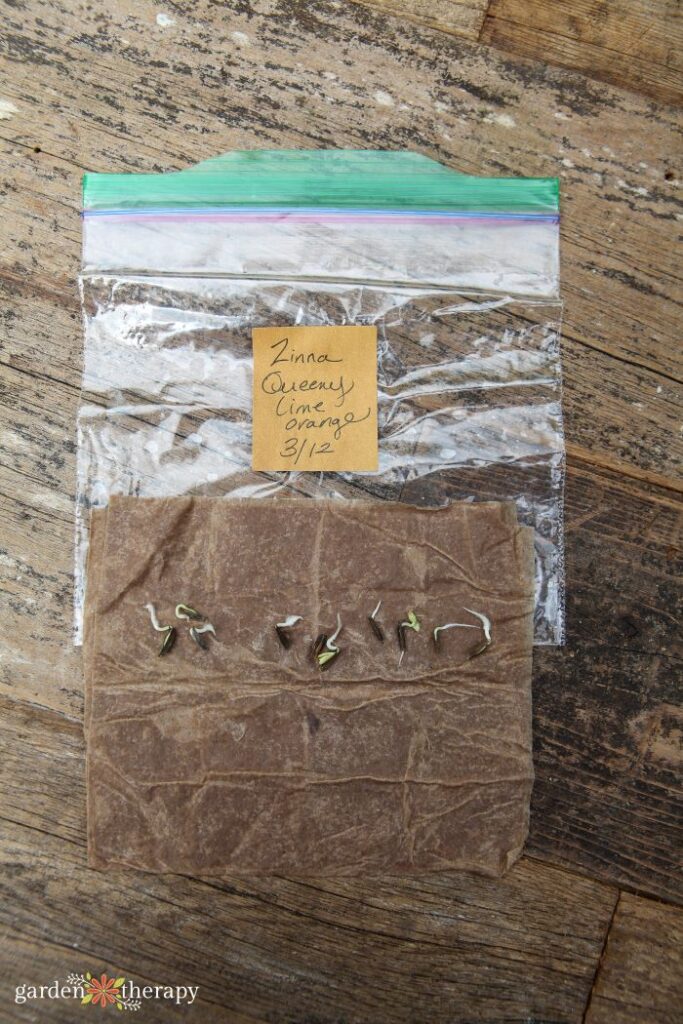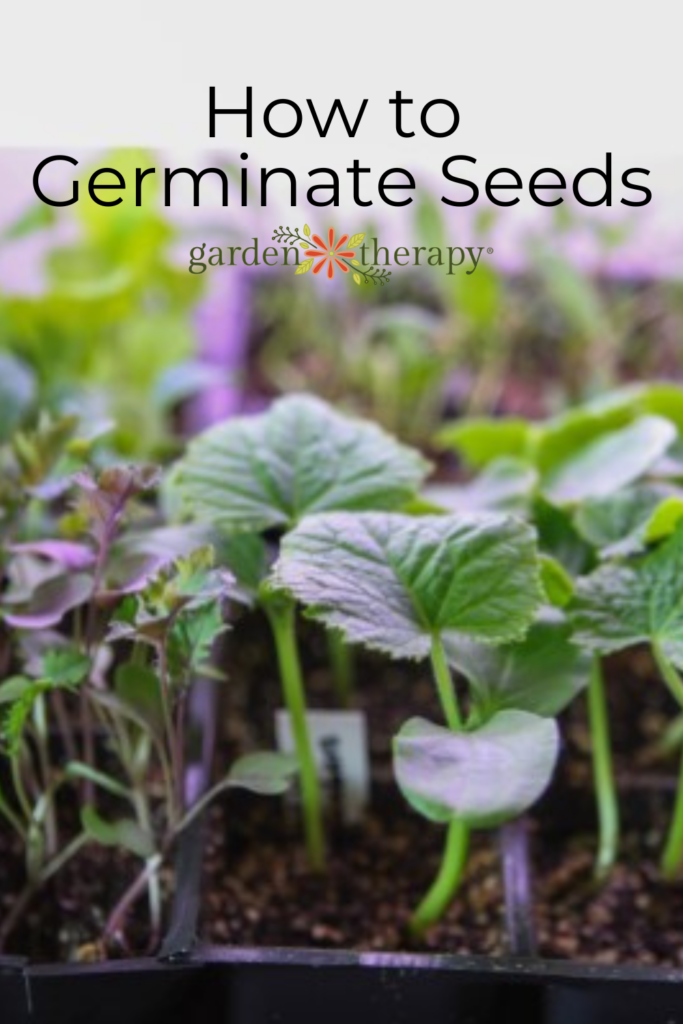It all begins with a seed. The very first step to having a lush garden begins with successfully learning how to germinate seeds. When you’ve got all the right conditions in place, germinating seeds is actually quite easy! Here’s what you need to know.

Spring is such a giddy season for gardeners. Even before Mother Nature is ready for us, we can get a head start inside by starting seeds.
But have you ever potted up a whole bunch of seeds only to have a few—or even NO—seeds actually sprout?
Germination is when a seed sprouts, and while it is fairly easy, you still need to ensure you have the four growing conditions cemented in place to have a tray full of successfully germinated seeds.
This post exclusively covers how to germinate seeds. For a full guide on how to start seeds, including containers, growing conditions, and transplanting tips, head to my seed starting 101 post.
Let’s get into germinating seeds!
- How to Germinate Seeds
- 1. Soil
- 2. Moisture
- 3. Light
- 4. Soil Temperature
- Germination Tests
- How to Germinate Seeds in Paper Towel
- More Tips for Starting Seeds
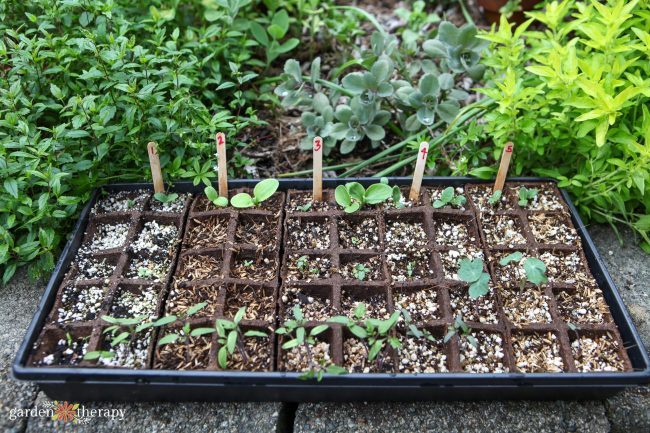
How to Germinate Seeds
These are the four conditions you must consider if you want to germinate seeds. Get them all right, and you’ll have seeds sprouting galore.
1. Soil
Moisture is a critical part of the germination process, and good-quality soil is needed to keep things moist but not soggy.
In most cases, regular potting soil will work fine for your seeds. But if you struggle to get seeds to germinate or have plenty of seeds to start, it’s worthwhile to invest in or make a seed-starting soil mixture.
A seed starting mix is sterile and offers balanced moisture retention and drainage. It also has fine particles that allow seedlings to root easily.
Seed starting soil doesn’t require any additional fertilizer or nutrients, as the seed will have everything needed for germination. But once the seedling has developed its “true leaves,” it’s time to move it into a transplant soil mix, which will have more nutrients.
You can find both my seed starting and my transplant mix soil recipes in this post.
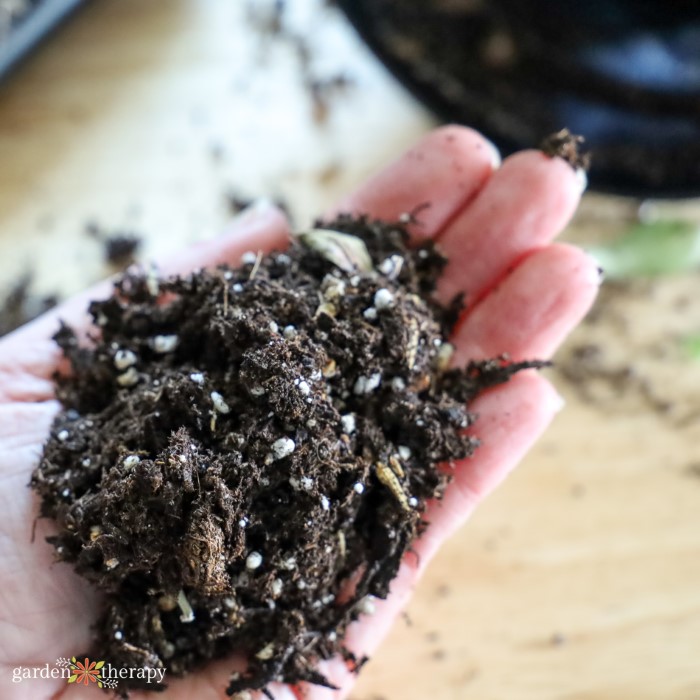
2. Moisture
Seedlings need plenty of moisture to germinate. Even plants that will one day be drought tolerant are very delicate when young and will die off quickly if they dry out.
Check your moisture levels daily, and always start off with damp soil before planting seeds. Water the seedlings from the bottom to prevent disrupting them.
A plastic dome acts as a mini greenhouse and is very efficient at keeping up humidity levels for seedlings. Most seed starting trays come with a plastic lid, but you can easily make one with a recycled salad container or any other clear plastic container with a lid.
Cut a few holes in the lid for airflow. Remove the lid daily to allow air exchange, and remove it completely when the seedlings emerge. Air circulation is important to prevent damping off.
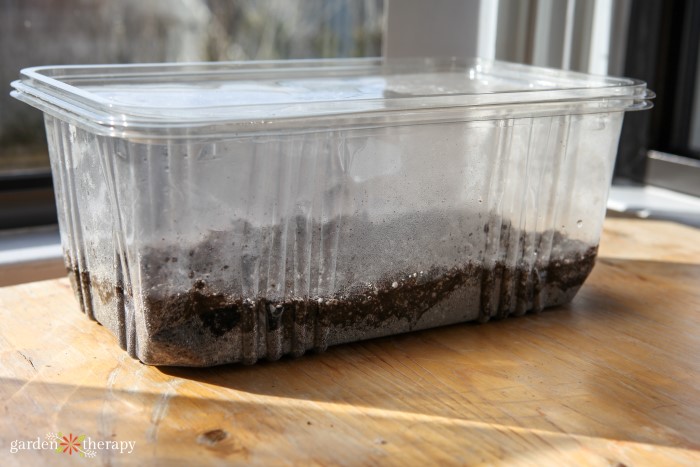
3. Light
In most cases, seeds actually don’t require any sunlight to germinate. The seed has stored all the energy it needs to emerge once the conditions (moisture and temperature) are right. You can germinate your seeds away from sunlight or a grow light, moving them into light upon germination.
But in some cases, the seeds will actually need light to germinate. This is usually indicated on the seed packet, but if not, anything that sits on top of the soil or is very shallow in the soil often needs light for germination.
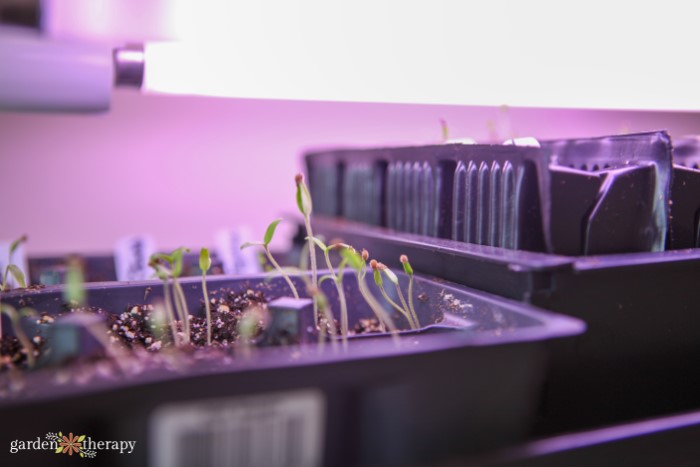
4. Soil Temperature
For those who struggle to get seeds to germinate, I often ask them if they have considered soil temperature. It often gets pushed to the wayside in favor of other conditions like water and light.
Most seeds have a desirable soil temperature for sprouting. Solanaceous vegetables prefer higher temperatures, like tomatoes, peppers, and eggplants. Meanwhile, Brassicas, such as broccoli and cabbage, like cool soil to germinate.
Greenhouses are very efficient at keeping higher temperatures, but they often require space and materials the average gardener doesn’t have. That’s where seedling heating pads come in handy. They’re fairly inexpensive and will really speed up germination. Keep the mats on 24/7 until germination to maintain stable, warm soil.
Just remember that most seedlings like cooler temperatures, so remove the seed mats once the plant has germinated.

Germination Tests
Packaged seeds are tested for their germination rates (the percentage of seeds that will sprout). Germination rates decline as seeds age, vary by variety, and can be altered by storage conditions and other factors.
Newly purchased seeds do not need germination testing. Overall, you don’t need to do a germination test. Seeds are cheap, but your time is not! However, if you have seeds that are many years old or that you have collected yourself give a germination test a try.
To perform a germination test, follow the instructions listed below in germinating seeds in a paper towel.

How to Germinate Seeds in Paper Towel
Germinating seeds in paper towel is quite simple and a good way to test out older seeds before committing to using up other materials and space to grow them.
Here’s how to germinate seeds in paper towel:
- Fold a paper towel in half and wet it with a spray bottle of water. Place ten seeds inside the fold of the paper towel and cover it.
- Place the paper towel in the plastic bag (it can be folded). Close the bag partly to create a mini greenhouse. The bag needs to have some airflow, so keep part of it open. Label the bag with the seed variety and date.
- Set the bag in a warm spot such as on top of the refrigerator.
- Each day, check the seeds for signs of sprouting and mist the paper towel. Seeds should sprout within 3 to 10 days or as indicated for the variety.
If you’re performing a germination test, low germination rates are less than 85%. In this case, you’ll want to plant extra seeds when you sow them. If it’s quite low, compost the seeds altogether and purchase new ones.
If you want to plant these seeds, place smaller seeds on top of moist soil. Plant deeper seeds as indicated on their seed packet. Use tweezers if necessary to move the seeds. If the paper towel is stuck to the root, cut it and plant it with the seed rather than trying to remove it.
